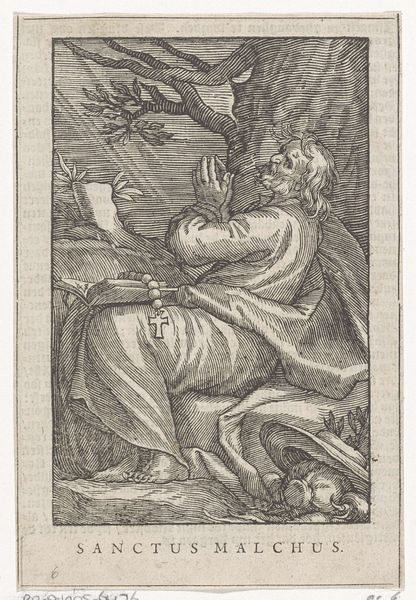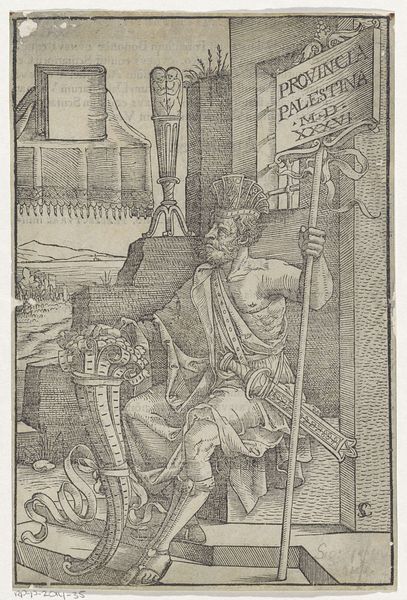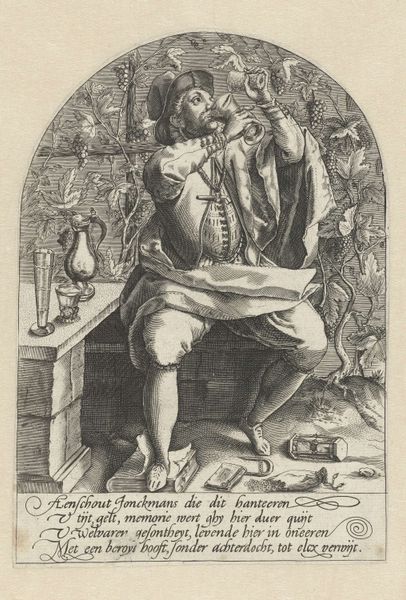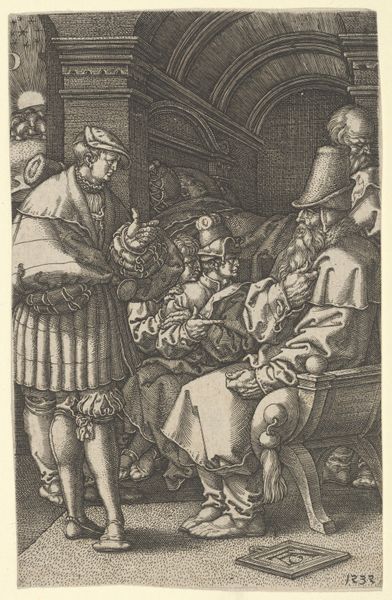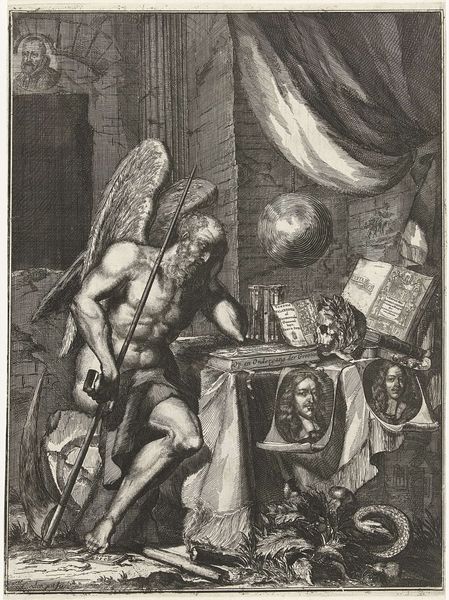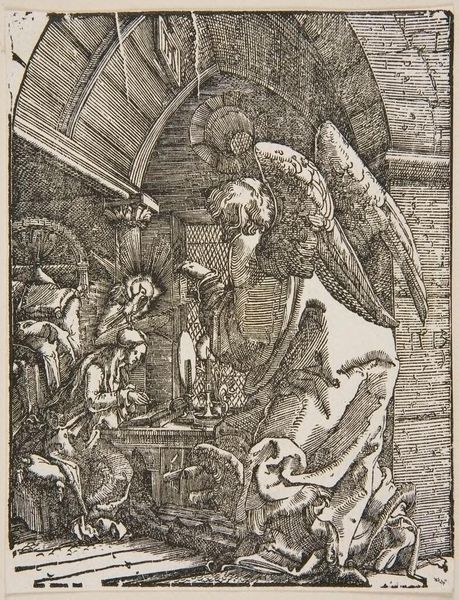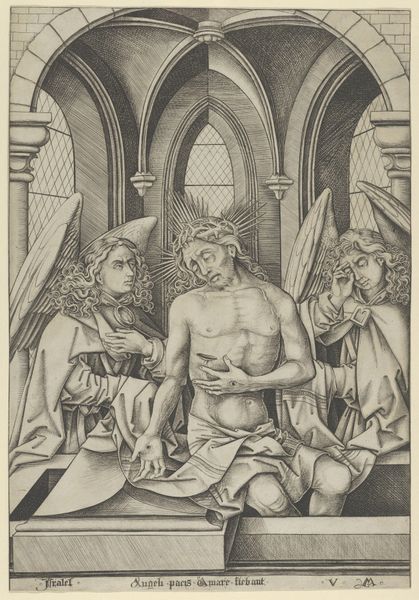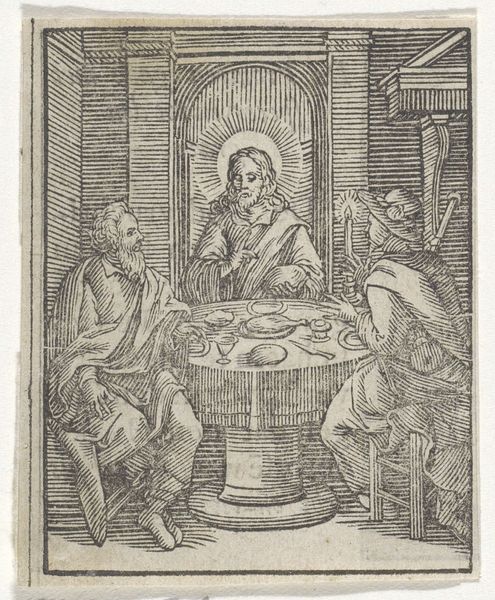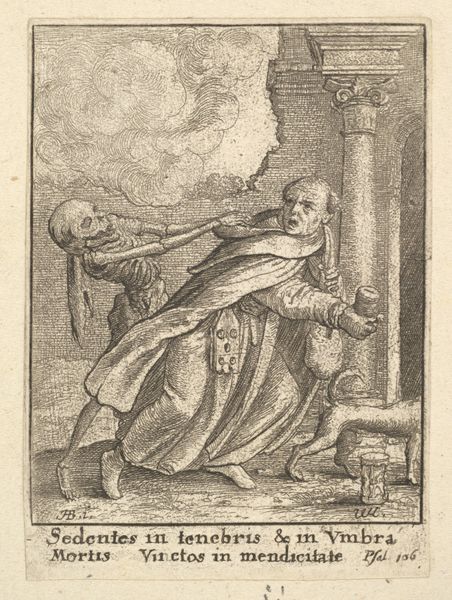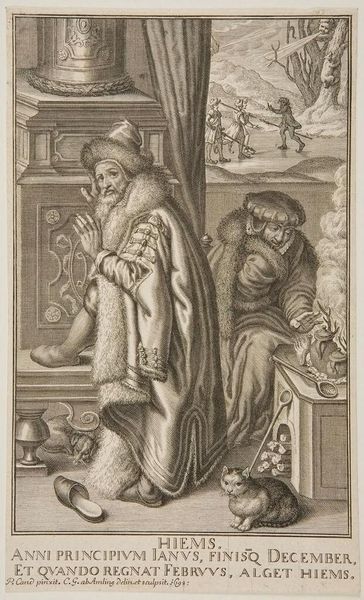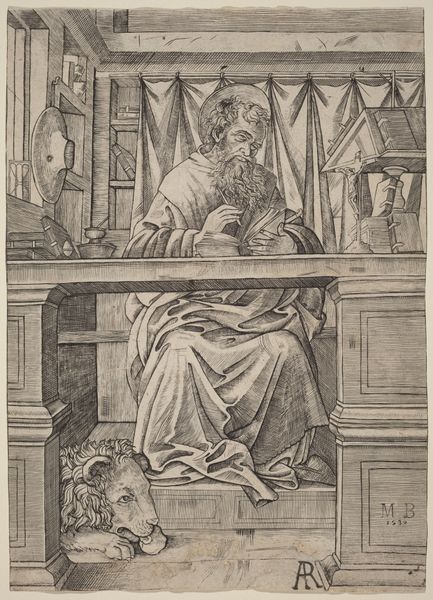
Zelfportret van Michiel van Musscher in allegorische omlijsting 1685
0:00
0:00
engraving
#
portrait
#
allegory
#
baroque
#
history-painting
#
engraving
Dimensions: height 308 mm, width 281 mm
Copyright: Rijks Museum: Open Domain
Editor: Here we have Michiel van Musscher's "Self-Portrait in an Allegorical Setting," created in 1685. It’s an engraving, and what strikes me is the somewhat theatrical composition, with the artist framed by curtains and surrounded by allegorical figures. It's quite dense and a bit unsettling. What do you see when you look at this piece? Curator: Indeed. Let us consider the visual dynamics. Notice the stark contrast in textures, the softness of the drapery against the angular lines of Father Time and the plinth. How does this interplay contribute to the overall symbolic message? Editor: I hadn’t thought about the textures, only the symbols. Is that an hourglass Father Time is holding? The bubbles also seem symbolic – perhaps the fleeting nature of life? Curator: Precisely. The hourglass, the bubbles, and even the tools of the artist's trade speak to van Musscher’s conception of mortality and the enduring power of art. The arrangement of these motifs forms a sophisticated visual argument. Consider also how van Musscher has placed himself within the tableau. Is he defiant, accepting, or something else entirely? Editor: I see a quiet acceptance, perhaps a melancholy awareness. He seems almost detached from the surrounding drama. Curator: An astute observation. Do you think this detachment is emphasized by the limited tonal range inherent in the engraving medium, and the resulting dramatic light that focuses attention? Editor: Definitely. The stark contrasts add to the somber mood and the feeling of a carefully constructed performance. I had overlooked the textures entirely until you pointed them out. It makes it much more immediate. Curator: And this, of course, is the crucial contribution of a careful analysis of form. Hopefully we’ve inspired new questions rather than firm conclusions!
Comments
No comments
Be the first to comment and join the conversation on the ultimate creative platform.

